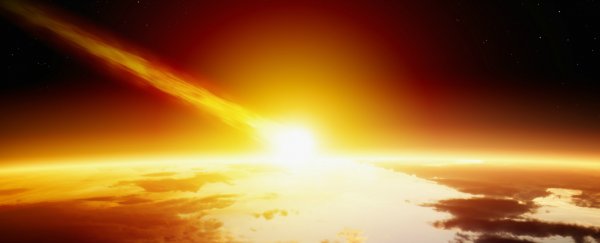Asteroids might not look like much on the outside, but you shouldn't judge a book by its cover. Underneath the surface of some asteroids is a treasure trove of a type of mineral, called platinum, that is rare on Earth but extremely lucrative - 1,000 cubic centimetres of platinum is worth close to $US1 million. And asteroids have a lot more than that.
One of these platinum-loaded asteroids will be flying by Earth on Sunday, July 19. And this particular one, called asteroid 2011 UW-158, is thought to harbour an estimated $US5.4 trillion worth of platinum.
Although asteroid mining is a goal for near-future for space exploration, we don't have the technology right now to mine one. What's more, even at it's closest approach, the asteroid will still be 2.4 million km (1.5 million miles) from Earth - that's about six times farther than the Moon.
At a size of roughly 457-metres (1,500-feet) wide, spotting this asteroid will be like trying to see an object one hundredth of an inch wide from a mile away. You won't be able to see it with the naked eye.
Luckily, the online observatory, Slooh, will be using their team of telescopes in the Canary Islands to spot the asteroid as it flies by, and they will be broadcasting the views online.
The broadcast will start at 10pm UTC on Sunday (6pm ET on Sunday and 8am AEST on Monday) and will include commentary from host Eric Edelman and Slooh astronomer Bob Berman about the asteroid and the lucrative material it harbours. You can watch the broadcast in the live feed provided at the end of this post.
"It's always fun when an asteroid whooshes past our world," Berman said in a Slooh announcement. "What makes this unusual is the large amount of platinum believed to be lurking in the body of this space visitor. Can it be mined someday, perhaps not too far in the future?"
Asteroid mining could be an extremely useful business for agencies like NASA, which hopes to capture an asteroid and bring it in orbit around the Moon soon enough for future astronauts to visit it and collect samples by as early as 2025.
NASA says that the materials frozen in asteroids could "be used in developing the space structures and in generating the rocket fuel that will be required to explore and colonise our solar system in the twenty-first century".
Check out the live Slooh broadcast below starting at 10pm UTC on Sunday, July 19 (6pm ET on Sunday or 8am AEST on Monday, July 20):
This article was originally published by Business Insider.
More from Business Insider:
